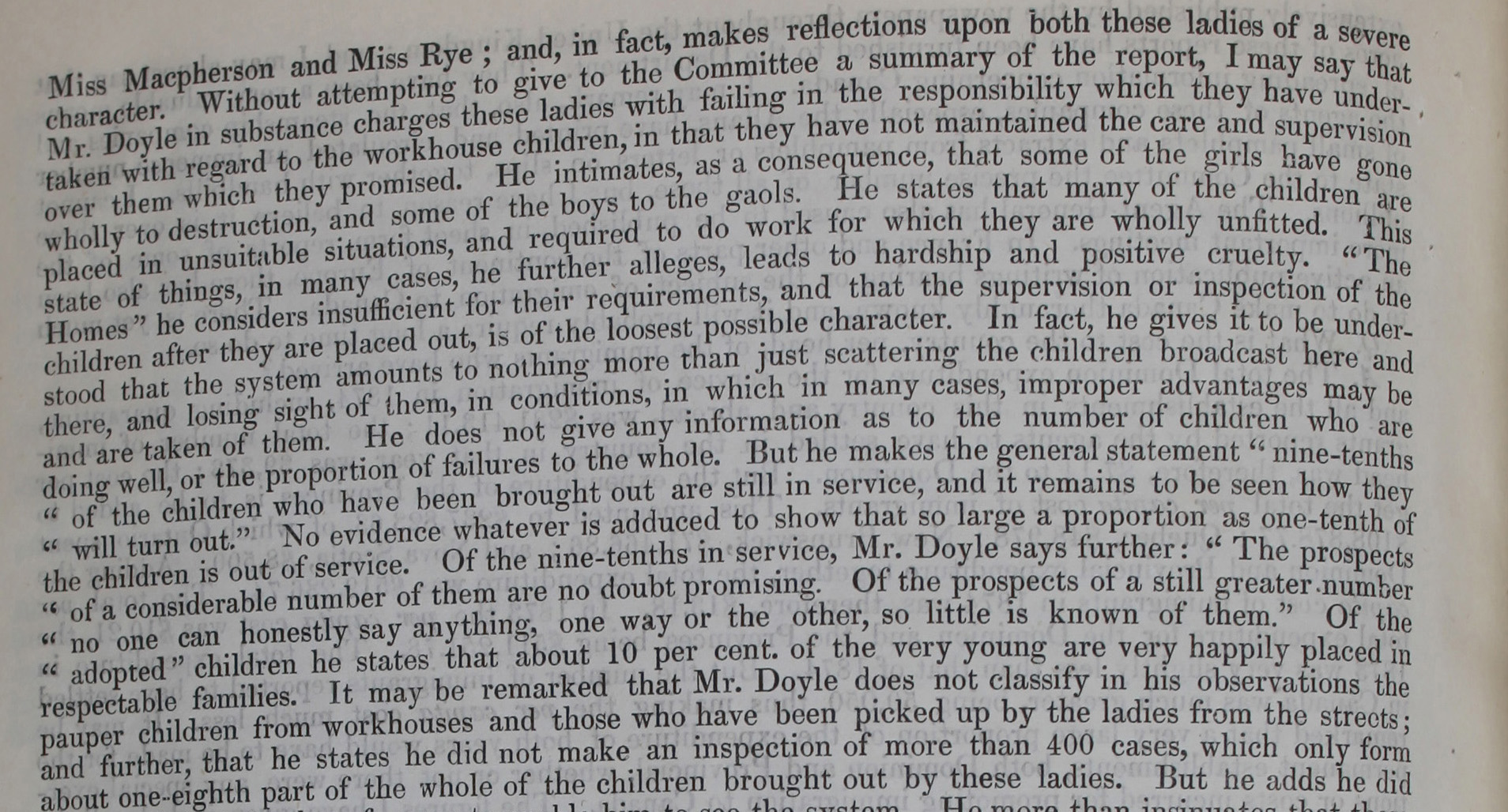
… Miss Macpherson and Miss Rye; and, in fact, makes reflections upon both these ladies of a severe character. Without attempting to give to the Committee a summary of the report, I may say that Mr. Doyle in substance charges these ladies with failing in the responsibility which they have undertaken with regard to the workhouse children, in that they have not maintained the care and supervision over them which they promised. He intimates [suggests], as a consequence, that some of the girls have gone wholly to destruction, and some of the boys to the gaols. He states that many of the children are placed in unsuitable situations, and required to do work for which they are wholly unfitted. This state of things, in many cases, he further alleges, leads to hardship and positive cruelty. “The Homes” [reception centres in Canada] he considers insufficient for their requirements, and that the supervision or inspection of the children after they are placed out, is of the loosest possible character. In fact, he gives it to be understood that the system amounts to nothing more than just scattering the children broadcast here and there, and losing sight of them, in conditions, in which in many cases, improper advantages may be and are taken of them. He does not give any information as to the number of children who are doing well, or the proportion of failures to the whole. But he makes the general statement “nine-tenths” of the children who have been brought out are still in service, and it remains to be seen how they “will turn out”. No evidence whatever is adduced [used] to show that so large a proportion as one-tenth of the children is out of service. Of the nine-tenths in service, Mr. Doyle says further: “The prospects” of a considerable number of them are no doubt promising. Of the prospects of a still greater number “no one can honestly say anything, one way or the other, so little is known of them”. Of the “adopted” children, he states that about 10 percent of the very young are very happily placed in respectable families. It may be remarked that Mr. Doyle does not classify in his observations the pauper children from the workhouses and those who have been picked up by the ladies from the streets; and further, that he states he did not make an inspection of more than 400 cases, which only form about one-eighth part of the whole of the children brought out by these ladies.
…
Extracts from a Report of the Proceeding of the Committee of the House of Commons on Immigration and Colonisation, 1874, Catalogue ref: MH 32/20.
- What 4 criticisms did Andrew Doyle make concerning Maria Rye and Annie Macpherson?
- Does he think that adopted children have benefited from the schemes?
- Doyle investigated 400 cases for his report. What was the total number of children brought to Canada by Rye and Macpherson?
